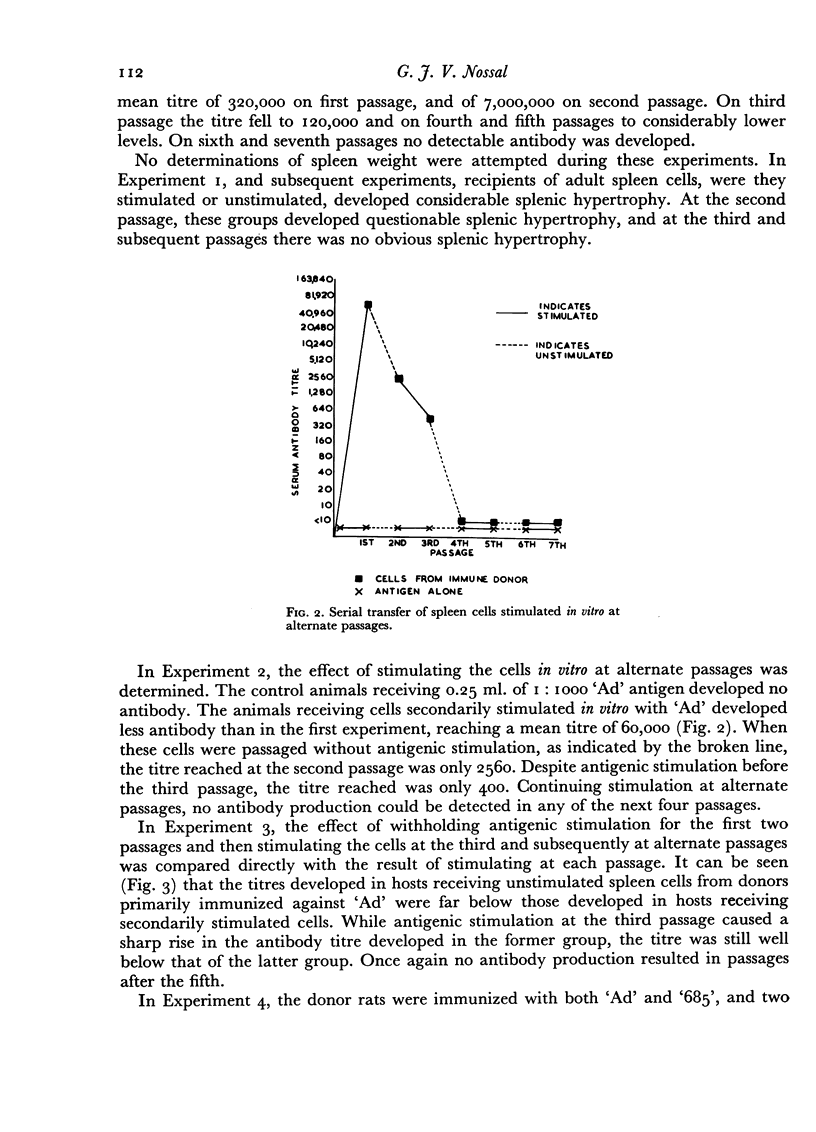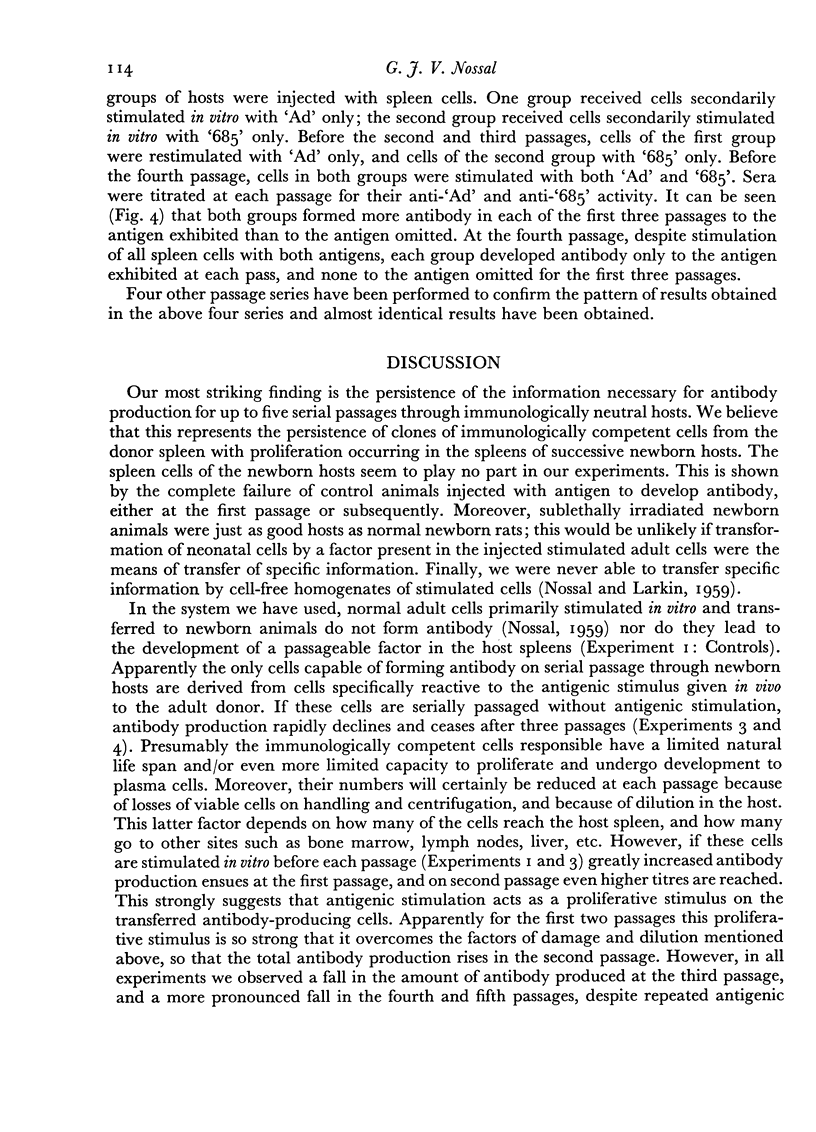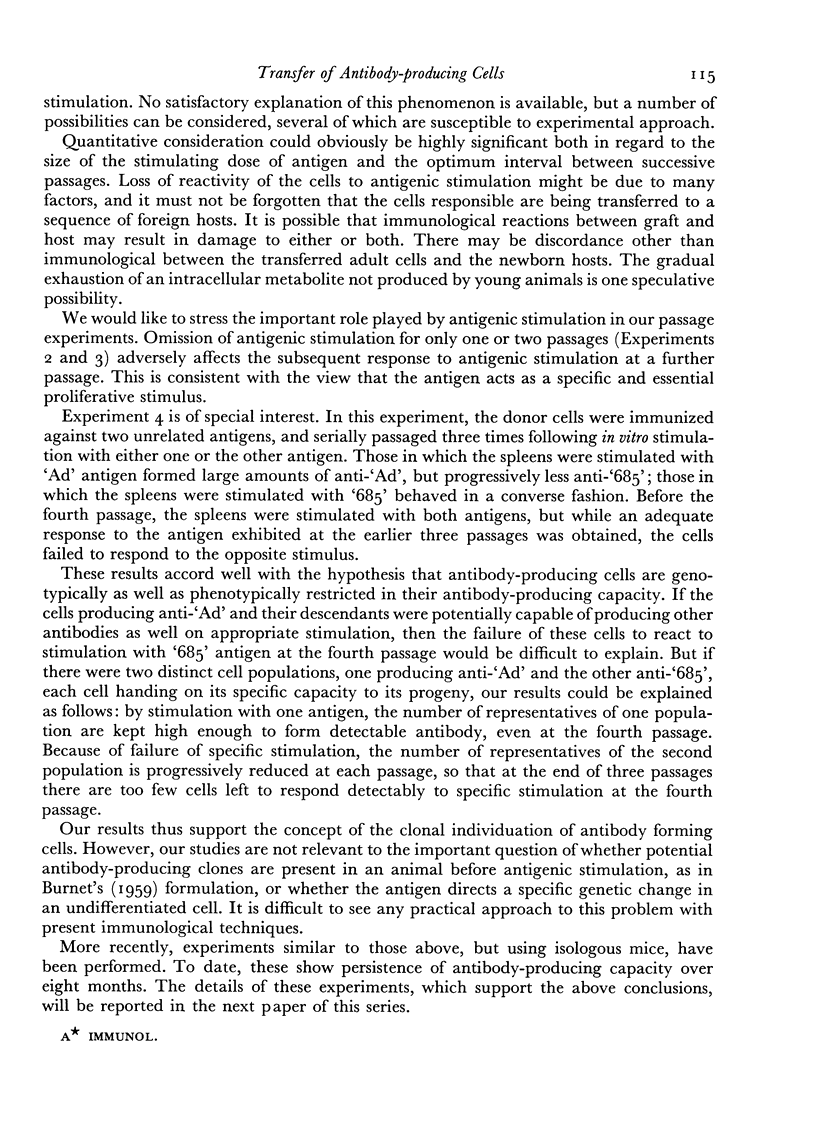Abstract
These studies have tested the behaviour of antibody-producing cells on serial transfer through immunologically neutral hosts. Spleen cells from rats primarily immunized in vivo with a Salmonella flagellar antigen were secondarily stimulated in vitro by incubation with the antigen at 37° C. They were then injected intraperitoneally into homologous rats less than 48 hours old. Two weeks later these host rats were killed, their sera titrated for antiflagellar antibody, and their spleen cells transferred to further newborn hosts, either with or without further antigenic stimulation. This type of transfer was continued for up to seven passages. It was found that if the spleen cells were not antigenically stimulated in vitro, they formed comparatively small quantities of antibody, and successful passage could only be achieved for two or three passages. If the spleen cells were antigenically stimulated before passage, much more antibody was produced, and successful passage could be achieved for five passages. Moreover, if the donor animal had been immunized with two unrelated antigens, and the spleen cells before passage were stimulated with one antigen but not the other, the hosts developed far more antibody to the former than to the latter.
These results are discussed in the light of recent immunological theory, and are considered to support clonal hypotheses of antibody formation.
Full text
PDF







Selected References
These references are in PubMed. This may not be the complete list of references from this article.
- COONS A. H. The cytology of antibody formation. J Cell Physiol Suppl. 1958 Dec;52(Suppl 1):55–67. doi: 10.1002/jcp.1030520406. [DOI] [PubMed] [Google Scholar]
- LEDERBERG J. Genes and antibodies. Science. 1959 Jun 19;129(3364):1649–1653. doi: 10.1126/science.129.3364.1649. [DOI] [PubMed] [Google Scholar]
- LEDERBERG J. Genetic approaches to somatic cell variation: summary comment. J Cell Physiol Suppl. 1958 Dec;52(Suppl 1):383–401. doi: 10.1002/jcp.1030520418. [DOI] [PubMed] [Google Scholar]
- NOSSAL G. J. Antibody production by single cells. Br J Exp Pathol. 1958 Oct;39(5):544–551. [PMC free article] [PubMed] [Google Scholar]
- NOSSAL G. J., LEDERBERG J. Antibody production by single cells. Nature. 1958 May 17;181(4620):1419–1420. doi: 10.1038/1811419a0. [DOI] [PubMed] [Google Scholar]
- NOSSAL G. J. Studies on the transfer of antibody-producing capacity. I. The transfer of antibody-producing cells to young animals. Immunology. 1959 Apr;2(2):137–147. [PMC free article] [PubMed] [Google Scholar]
- SIMONSEN M. The impact on the developing embryo and newborn animal of adult homologous cells. Acta Pathol Microbiol Scand. 1957;40(6):480–500. [PubMed] [Google Scholar]
- TALMAGE D. W. Allergy and immunology. Annu Rev Med. 1957;8:239–256. doi: 10.1146/annurev.me.08.020157.001323. [DOI] [PubMed] [Google Scholar]
- WHITE R. G. Antibody production by single cells. Nature. 1958 Nov 15;182(4646):1383–1384. doi: 10.1038/1821383a0. [DOI] [PubMed] [Google Scholar]


